This article was co-authored by Laura Marusinec, MD. Dr. Marusinec is a board certified Pediatrician at the Children's Hospital of Wisconsin, where she is on the Clinical Practice Council. She received her M.D. from the Medical College of Wisconsin School of Medicine in 1995 and completed her residency at the Medical College of Wisconsin in Pediatrics in 1998. She is a member of the American Medical Writers Association and the Society for Pediatric Urgent Care.
wikiHow marks an article as reader-approved once it receives enough positive feedback. This article received 21 testimonials and 87% of readers who voted found it helpful, earning it our reader-approved status.
This article has been viewed 3,839,276 times.
Tonsil stones, also known as tonsilloliths, are small, off-white deposits that you can see in the craters of your tonsils. They are usually caused when bits of food get lodged in these craters; bacteria start feeding on them, digesting them until they turn into the foul-smelling gunk we know and hate. Tonsil stones are not uncommon for people with deep tonsil craters. Although they are regularly dislodged during coughing and eating, and medical or home intervention is often unnecessary, there are several methods for removing these deposits and prevent their recurrence.
Steps
Removing Stones with Cotton Swab
-
1Assemble your materials. Get together the cotton swabs and other necessary components:[1]
- Cotton swabs
- Toothbrush
- A mirror
- Flashlight, flashlight app, or lamp that you can direct.
- Running water.
-
2Shine a light down your throat. Open your mouth and shine the light into your mouth. Do this in front of a mirror so that you can locate the tonsil stones.Advertisement
-
3Flex your tonsils. Close off, or flex, your throat muscles while sticking out your tongue. Go "Ahh," and tighten the muscles in the back of your throat. Do this while holding your breath, almost as if you were gargling water. This should push your tonsils forward so you can see them better.
-
4Prepare the cotton swab. Run water and dab the cotton swab into it. This will make it softer and less irritating for your throat. Don't put it down, or you risk contamination. Minimize the contact your cotton swab makes with any germ-carrying surface, including your hands. When you remove the stones, shake them off into the sink without touching your swab to any surface, or wipe them on a clean paper towel.
- If you touch something like the sink or counter with your swab, trade it for a new one.
-
5Poke at the stones gently with your cotton swab. Press or poke at your stone until you dislodge it. Carry it out of your mouth on the cotton swab.
- Be very gentle, as bleeding may occur. Although a little bit of bleeding is normal, try as much as you can to minimize the bleeding. Cuts and wounds can get infected by the same bacteria in your mouth that cause tonsil stones.
- Rinse if bleeding occurs, and brush your teeth and tongue as soon as it stops.
-
6Rinse with water and repeat. Rinse with water and move on to the next stone. Rinse especially if your saliva feel sticky, which sometimes occurs after the throat has been poked. As sticky saliva starts forming, drink water to thin it out.[2]
-
7Check for any hidden stones. After you have extracted all the stones you can see, place your thumb into your neck under your jaw, and your (clean) index finger into your mouth right beside your tonsil and gently try to squeeze any remaining stones to the openings (like squeezing out toothpaste). If no stones appear, don't assume they aren't there. Some craters are very deep and it is sometimes hard to get them all.
-
8Remove stubborn stones carefully. If you have a stone that won't come out with a cotton swab, it may be especially deep. Don't force it, as this may cause bleeding. Use the back of your toothbrush to gently nudge it until it loosens, then remove it with the swab or with the toothbrush.[3]
- If the stones still won't come out, you can try gargling with mouthwash for a few days and then trying again.
- If that doesn't work, you may want to try using an oral irrigator. If this doesn't work, you can increase the stream a little.
- Keep in mind that some people have a strong gag reflex and will not tolerate poking.
Using an Oral Irrigator
-
1Buy an oral irrigator. Oral irrigators, such as water-picks, can be used to push tonsil stones out of their cavities.
- Test it out briefly on your tonsils before you buy it—if the spray is too strong, and hurts in any way, don't use it to get out your stones.[4]
-
2Use the irrigator on its lowest setting. Place the irrigator inside the mouth but not touching the stone, and switch on the oral irrigator on the lowest setting. Direct the stream of water onto one visible tonsil stone, keeping it steady until the stone has been dislodged.
-
3Help your stones along with a cotton swab or toothbrush. If the irrigator is loosening the stones but not removing them, alternate using the pic and using a cotton swab or the back of your toothbrush.
- Repeat steps for each visible tonsil stone. Remember to be gentle as you pressurize the stones away with the water.
Gargling to Remove and Prevent Stones
-
1Gargle with mouthwash after eating. Since tonsil stones often form after leftover food gets stuck in tonsil craters, it's prudent to gargle with mouthwash after eating. Not only will mouthwash improve the health of your teeth and gums, it will also help dislodge tiny bits of food before they become a meal for tonsil stone-creating bacteria.[5]
- Make sure to use an alcohol-free mouthwash.
-
2Try it with warm water and salt. Mix one teaspoon of salt along with six ounces of water, stirring until incorporated. Gargle the salt water with your head tilted back. Salt water could dislodge bits of food from the crater while helping to soothe any discomfort caused by tonsillitis, which sometimes accompanies tonsil stones.[6]
-
3Invest in an oxygenating mouthwash. Oxygenating mouthwashes contain chlorine dioxide and natural zinc compounds. Oxygen itself hinders bacterial growth, making oxygenating mouthwashes helpful for treating and preventing tonsil stones.[7]
- Oxygenating mouthwashes are very strong, however, and therefore should only be used once or twice per week to avoid overuse. Supplement your natural mouthwash regimen with oxygenating mouthwash.
Medical Intervention
-
1Talk to your doctor about getting a tonsillectomy. A tonsillectomy is a relatively simple and effective procedure. It is relatively low-risk, and the recovery period is often short, with throat pain and minor bleeding being the most common concerns.[8]
- If your doctor is concerned about your medical history, age, or other factors, they may advise you to go another route.
- Keep in mind that a tonsillectomy would only be recommended for someone with recurrent or very stubborn or complicated tonsil stones.
- You can also ask your doctor about removing your tonsil stones. Your doctor may be able to remove them using special irrigation equipment.
-
2Consider a course of antibiotics for persistent or severe tonsil stones. Different antibiotics, such as penicillin or erythromycin, may be used to treat tonsil stones, but they fail to reverse the underlying cause of tonsil stones, which is food being caught in the tonsils. There may be a relapse, and antibiotics may also have adverse side-effects. Most antibiotics kill off beneficial bacteria in the mouth and gut which would help do battle against the problem bacteria.[9]
-
3Ask about laser treatment. The tissue that deep tonsil pockets are made of can be removed via laser. Laser resurfacing smoothes out the surface of the tonsils so that they no longer have pockets and craters. This procedure is not without risks of its own, however.[10]
Expert Q&A
-
QuestionWhat type of doctor should I seek out to treat tonsillitis?
 Laura Marusinec, MDDr. Marusinec is a board certified Pediatrician at the Children's Hospital of Wisconsin, where she is on the Clinical Practice Council. She received her M.D. from the Medical College of Wisconsin School of Medicine in 1995 and completed her residency at the Medical College of Wisconsin in Pediatrics in 1998. She is a member of the American Medical Writers Association and the Society for Pediatric Urgent Care.
Laura Marusinec, MDDr. Marusinec is a board certified Pediatrician at the Children's Hospital of Wisconsin, where she is on the Clinical Practice Council. She received her M.D. from the Medical College of Wisconsin School of Medicine in 1995 and completed her residency at the Medical College of Wisconsin in Pediatrics in 1998. She is a member of the American Medical Writers Association and the Society for Pediatric Urgent Care.
Board Certified Pediatrician A general practitioner can treat most types of tonsillitis. However, for complications or need for surgery, an ENT doctor (or otolaryngologist) usually would be needed.
A general practitioner can treat most types of tonsillitis. However, for complications or need for surgery, an ENT doctor (or otolaryngologist) usually would be needed. -
QuestionWhat do sore tonsils mean?
 Laura Marusinec, MDDr. Marusinec is a board certified Pediatrician at the Children's Hospital of Wisconsin, where she is on the Clinical Practice Council. She received her M.D. from the Medical College of Wisconsin School of Medicine in 1995 and completed her residency at the Medical College of Wisconsin in Pediatrics in 1998. She is a member of the American Medical Writers Association and the Society for Pediatric Urgent Care.
Laura Marusinec, MDDr. Marusinec is a board certified Pediatrician at the Children's Hospital of Wisconsin, where she is on the Clinical Practice Council. She received her M.D. from the Medical College of Wisconsin School of Medicine in 1995 and completed her residency at the Medical College of Wisconsin in Pediatrics in 1998. She is a member of the American Medical Writers Association and the Society for Pediatric Urgent Care.
Board Certified Pediatrician Sore tonsils are often a sign of a viral or bacterial infection. If you have a fever, swollen neck glands, or the tonsils are very red or swollen, or have a white or yellow coating on them, see your doctor. The tonsils also can be sore if you have tonsil stones, or have been straining your voice too much. Rarely, sore tonsils can be a sign of cancer or other serious problems.
Sore tonsils are often a sign of a viral or bacterial infection. If you have a fever, swollen neck glands, or the tonsils are very red or swollen, or have a white or yellow coating on them, see your doctor. The tonsils also can be sore if you have tonsil stones, or have been straining your voice too much. Rarely, sore tonsils can be a sign of cancer or other serious problems. -
QuestionDo I see my PCP or dentist for a tonsillectomy?
 Laura Marusinec, MDDr. Marusinec is a board certified Pediatrician at the Children's Hospital of Wisconsin, where she is on the Clinical Practice Council. She received her M.D. from the Medical College of Wisconsin School of Medicine in 1995 and completed her residency at the Medical College of Wisconsin in Pediatrics in 1998. She is a member of the American Medical Writers Association and the Society for Pediatric Urgent Care.
Laura Marusinec, MDDr. Marusinec is a board certified Pediatrician at the Children's Hospital of Wisconsin, where she is on the Clinical Practice Council. She received her M.D. from the Medical College of Wisconsin School of Medicine in 1995 and completed her residency at the Medical College of Wisconsin in Pediatrics in 1998. She is a member of the American Medical Writers Association and the Society for Pediatric Urgent Care.
Board Certified Pediatrician Usually you see an ENT doctor (or otolaryngologist) for a tonsillectomy, not a dentist.
Usually you see an ENT doctor (or otolaryngologist) for a tonsillectomy, not a dentist.
References
- ↑ https://my.clevelandclinic.org/health/diseases/21505-tonsil-stones
- ↑ https://myhealth.alberta.ca/Health/aftercareinformation/pages/conditions.aspx?hwid=ace4965
- ↑ https://my.clevelandclinic.org/health/diseases/21505-tonsil-stones
- ↑ https://patient.info/ears-nose-throat-mouth/sore-throat-2/tonsillolith-tonsil-stones
- ↑ https://patient.info/ears-nose-throat-mouth/sore-throat-2/tonsillolith-tonsil-stones
- ↑ https://www.healthdirect.gov.au/tonsil-stones
- ↑ http://www.nytimes.com/2009/09/01/health/01tons.html
- ↑ https://share.upmc.com/2015/07/what-are-tonsil-stones-tonsilloliths/
- ↑ https://my.clevelandclinic.org/health/diseases/21505-tonsil-stones
About This Article
If you’re suffering from tonsil stones, you can remove them yourself by swiping a clean, damp cotton swab across your tonsils. Do this gently, as it can cause bleeding. When you dislodge a stone, wipe the cotton swab onto a clean paper towel, then rinse your mouth with water and move on to the next stone. If you have a stone that won’t come out with a cotton swab, use the back of your toothbrush to gently nudge it until it loosens, then remove it with a clean swab or the toothbrush. To learn more from our Doctor of Medicine, like how to gargle and prevent tonsil stones, keep reading the article!
-Step-1-Version-2.webp)
-Step-2-Version-2.webp)
-Step-3-Version-2.webp)
-Step-4-Version-2.webp)
-Step-5-Version-2.webp)
-Step-6-Version-2.webp)
-Step-7-Version-2.webp)
-Step-8-Version-2.webp)
-Step-9-Version-2.webp)
-Step-10-Version-2.webp)
-Step-11-Version-2.webp)
-Step-12-Version-2.webp)
-Step-13-Version-2.webp)
-Step-14-Version-2.webp)

-Step-16-Version-2.webp)
-Step-17-Version-2.webp)
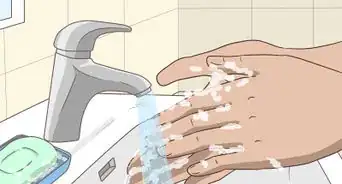
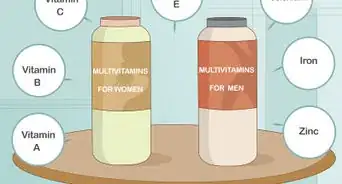

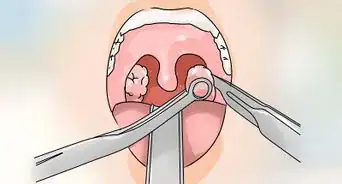


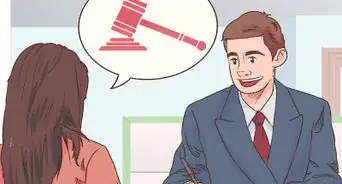
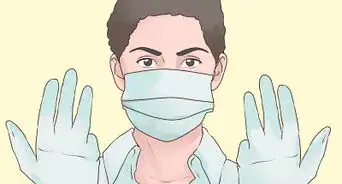

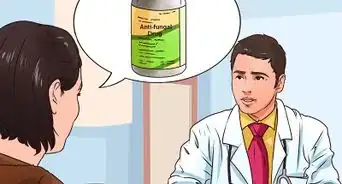
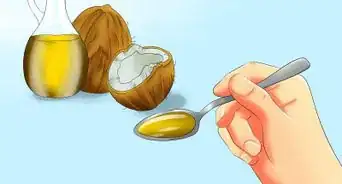
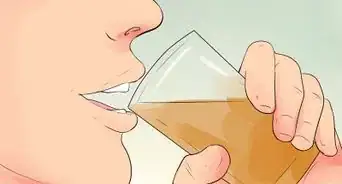

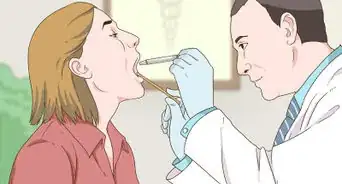
















































Medical Disclaimer
The content of this article is not intended to be a substitute for professional medical advice, examination, diagnosis, or treatment. You should always contact your doctor or other qualified healthcare professional before starting, changing, or stopping any kind of health treatment.
Read More...